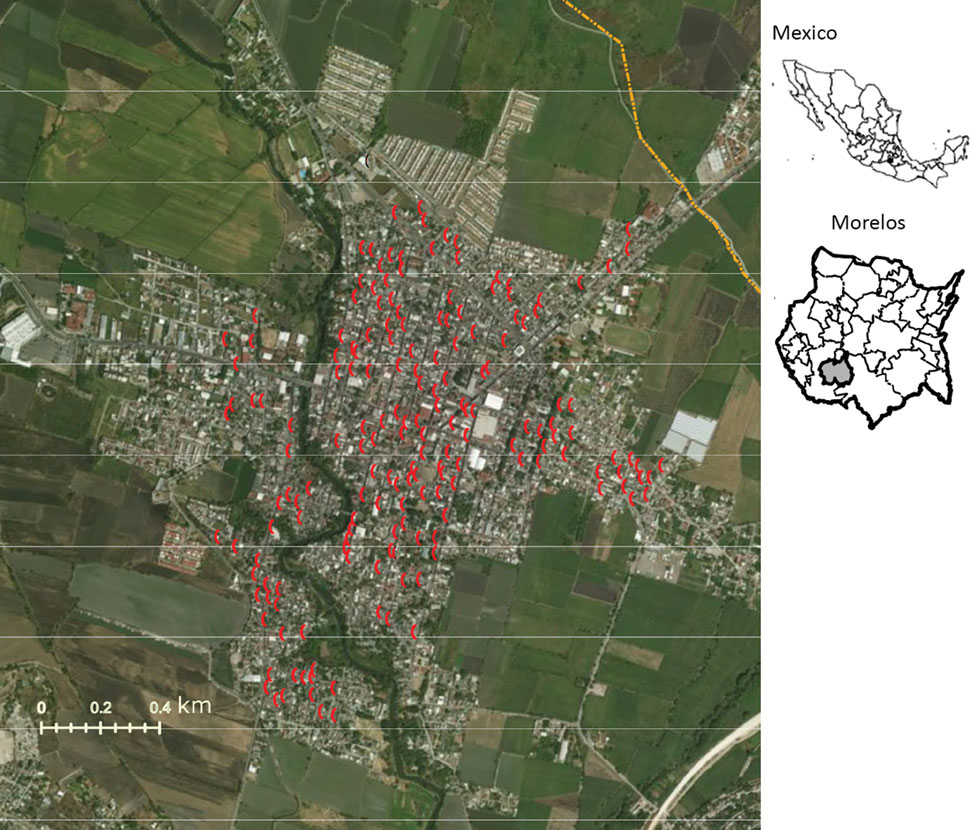Volume 25, Number 8—August 2019
Research
Natural Vertical Transmission of Zika Virus in Larval Aedes aegypti Populations, Morelos, Mexico
Figure 1

Figure 1. Location of ovitraps in the municipality of Jojutla, Morelos, Mexico (red). The ovitraps were set according to the guidelines of the Vector Transmitted Diseases Program of the National Center of Preventive Programs and Disease Control (CENAPRECE; http://www.cenaprece.salud.gob.mx/programas/interior/portada_vectores.html). Insets show location of Morelos in Mexico (top) and Jojutla in Morelos (bottom).
Page created: July 16, 2019
Page updated: July 16, 2019
Page reviewed: July 16, 2019
The conclusions, findings, and opinions expressed by authors contributing to this journal do not necessarily reflect the official position of the U.S. Department of Health and Human Services, the Public Health Service, the Centers for Disease Control and Prevention, or the authors' affiliated institutions. Use of trade names is for identification only and does not imply endorsement by any of the groups named above.